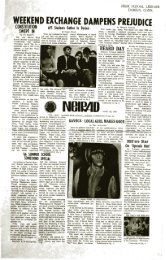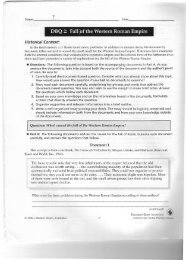Forensic Investigation Curriculum (pdf) - Darien Public Schools
Forensic Investigation Curriculum (pdf) - Darien Public Schools
Forensic Investigation Curriculum (pdf) - Darien Public Schools
You also want an ePaper? Increase the reach of your titles
YUMPU automatically turns print PDFs into web optimized ePapers that Google loves.
UNIT 8: Trace Evidence<br />
Essential Question 1: What types of trace evidence might be found, recognized,<br />
collected and analyzed at a crime scene?<br />
Essential Question 2: What characteristics of hair, fibers, pollen & spores, glass, etc.<br />
are useful in providing evidence in crime scenes?<br />
CONTENT KNOWLEDGE OBJECTIVES<br />
Initial Understanding<br />
� Detail the different types of trace evidence that might be found at a crime scene.<br />
� Demonstrate how different types of physical evidence are collected.<br />
Developing an Interpretation<br />
� Describe the origin and structure of human hair.<br />
� State how pollen and spores are formed.<br />
� Discuss the origin and structure of fibers and glass.<br />
Making Connections<br />
� Explain how the physical characteristics of hair, fibers, pollen, and glass make<br />
them useful pieces of evidence in a crime scene.<br />
� List the steps in recognizing, collecting, and packaging trace evidence.<br />
Taking a Critical Stance<br />
� Compare and contrast different types of glass based on density and refractive<br />
index.<br />
� Distinguish between human and animal hair.<br />
� Separate natural and manmade fibers based on physical and chemical<br />
characteristics.<br />
60



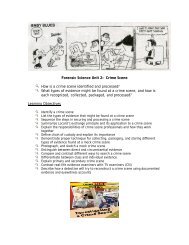
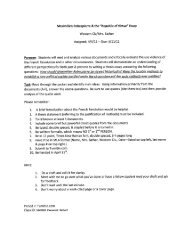

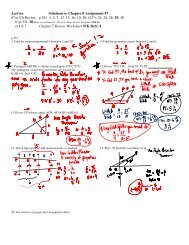
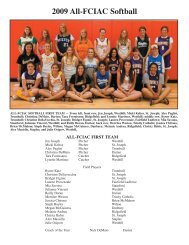
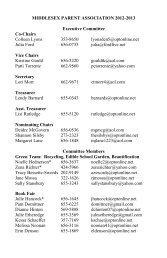
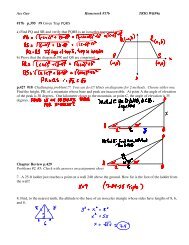
![Name Independent Practice Worksheet 23.]](https://img.yumpu.com/13527672/1/190x245/name-independent-practice-worksheet-23.jpg?quality=85)
